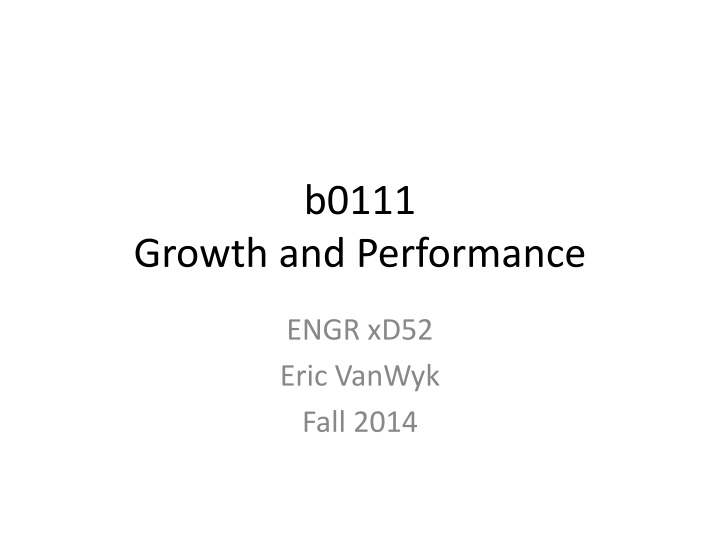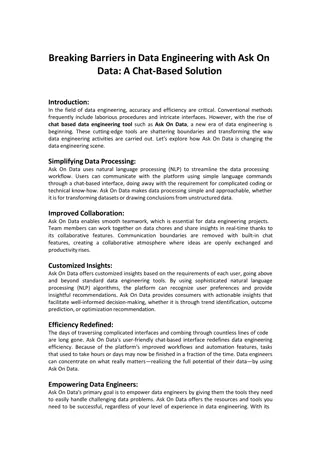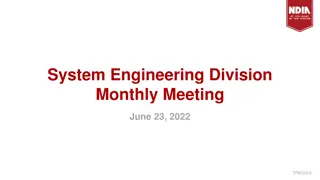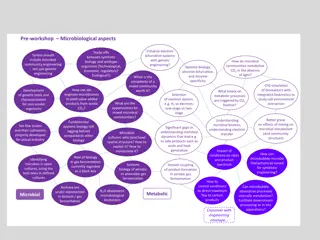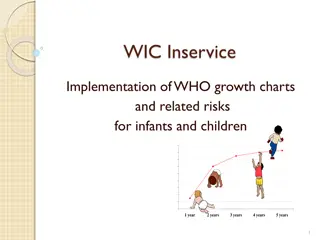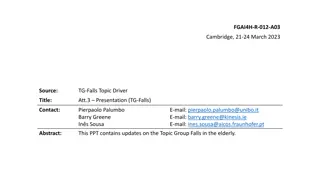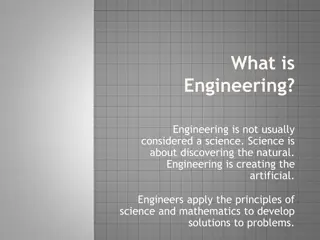Growth and Performance in Engineering: Fall 2014 Overview
The growth and performance dynamics in engineering through various topics such as physical area impact on manufacturing costs, decoder growth evaluation, look-up table analysis, and adder comparisons. Dive into the complexities of size in silicon, gate inputs, decoder architectures, and more for a comprehensive understanding of computational performance enhancement strategies.
Download Presentation

Please find below an Image/Link to download the presentation.
The content on the website is provided AS IS for your information and personal use only. It may not be sold, licensed, or shared on other websites without obtaining consent from the author.If you encounter any issues during the download, it is possible that the publisher has removed the file from their server.
You are allowed to download the files provided on this website for personal or commercial use, subject to the condition that they are used lawfully. All files are the property of their respective owners.
The content on the website is provided AS IS for your information and personal use only. It may not be sold, licensed, or shared on other websites without obtaining consent from the author.
E N D
Presentation Transcript
b0111 Growth and Performance ENGR xD52 Eric VanWyk Fall 2014
Acknowledgements Alyssa Bawgus Orion Taylor
Today Growth Size Homework and Lab Assigned Verilog Tricks Computational Performance
Size in Silicon Physical Area drives manufacturing cost # Chips per silicon wafer Number of inputs drives gate size Two transistors per input Slightly worse than linear growth Total Gate Inputs Rough Cost Estimate
Decoder Growth For a decoder with S select bits and D outputs D = 2^S Need S Inverters D AND Gates with S inputs Total Size:
Decoder Growth Review For a decoder with S select bits and D outputs D = 2^S Need S Inverters D AND Gates with S inputs (S) (DS) Total Size: DS+S = ?(??+1)=(D+1)log2(D)
Look Up Table w/Decoder D0 D1 D2 D3 S0 S1 A0 A1 D2_4S 0 1 0 1 1 1 1 0 0 0 0 1 Bit0 Bit1 Bit2
Look Up Table w/Decoder Repeated per Output Bit Depth of Table D0 D1 D2 D3 S0 S1 A0 A1 D2_4S 0 1 0 1 1 1 1 0 0 0 0 1 Bit0 Bit1 Bit2
Growth Characteristics This has 12 Gate Inputs 4 AND2 1 OR4 (8) (4) 0 Per decode line: 1 AND2 1 input of the OR 1 0 1 (#Decode Lines)*3 BitN
LUT Growth Review For a LUT with Depth D and Output Width W Need 1 Decoder W Output Structures Total Size:
LUT Growth Review For a LUT with Depth D and Output Width W Need 1 Decoder W Output Structures (D+1)log2(D) W(3D) Total Size: (D+1)log2(D) + W(3D)
Adder Comparison LUT for 32bit + 32bit = 32bit addition S = (32+32) = 64 W = 32 D=2^S = 18446744073709551616 Total Size = (D+1)log2(D) + W(3D) 2951479051793528258624 3 1021
Adder Comparison LUT for 32bit + 32bit = 32bit addition Size 3 1021 Chained Full Adder 9 NAND2 Gates per bit Size = 32 * 18 = 576 Apollo Guidance Computer: 4100 NOR3 ( 12,300 gate inputs)
Homework and Labs HW3 Due this Thursday Simple review of CompArch math Alone MP1 Due next Thursday Create and test an ALU In groups
Major Goals Understand propagation delay Finalize mastery of Structural Verilog Effective Testing through: Design Reuse Test set reduction (Orthoganality)
Minor Goals Optimized Structures Alternative Adders? Carry Look Ahead / Carry Select / Kogge Stone ALU shrinkage? How small can you go? Speed penalty? These are not worth any grade points Only do them if you re interested
Hint: `define Use `define syntax to avoid magic numbers `define ADD 3'd0 `define SUB 3'd1 `define XOR 3'd2 `define SLT 3'd3 Makes for more readable code
Hint: LUT Explicitly break out control logic to make a LUT Design Flow: 1. Create main structure, ignore control logic 2. Label all control logics 3. Make a table and assign values per Operation 4. Generate LUT from this table 5. Delay unnecessary decisions as long as possible
Hint: LUT Use human words: Describe Intent Less Magic Teammates will thank you Operation Mux ADD SUB AND NOR InvB NO YES NO NO InvOutput NO NO NO YES ADDSUB ADDSUB AND OR Late Bind Using `define? Using enum? (Nope) Hardcoding? Operation Mux ADD SUB AND NOR InvB InvOutput 0 0 0 1 MUX_ADD0 MUX_ADD1 MUX_AND0 MUX_OR 0
Hint: LUT Behavioral only allowed for this LUT Just to save on repetitive boolean logic practice Don t forget to add delays! You know what the underlying structure is
Hint: Generate This lab can get repetitive Instantiating 32 instances of everything generate genvar i; for (index = 0; index<32; index = index + 1) begin Good Hierarchical design helps e.g. Bitslice Generate does some of this for you // Repeated Code end endgenerate
Hint: Param Modules can have parameters One design, many variants Must be known at synthesis time Test a smaller variant Combine Generate and Param Exhaustively test a 4 bit ALU? Be careful! What did you leave untested?
Computer Performance MIPS (Million Instructions Per Second) vs. MHz (Million Cycles Per Second) Throughput (jobs/seconds) vs. Latency (time to complete a job) Measuring, Metrics, Evaluation what is best ? Hyper Pipelined Technology 3.09 GHz Pentium 4 The PowerBook G4 outguns Pentium III-based notebooks by up to 30 percent.* * Based on Adobe Photoshop tests comparing a 500MHz PowerBook G4 to 850MHz Pentium III-based portable computers
Performance Example: Planes Airplane Passenger Capacity (miles) Cruising Range Cruising Speed (mph) Passenger Throughput (passengermile/hour) Boeing 777 375 4630 610 228,750 Boeing 747 470 4150 610 286,700 Concorde 132 4000 1350 178,200 Douglas DC8 146 8720 544 79,424 Which is the best plane? Which gets one passenger to the destination first? Which moves the most passengers? Which goes the furthest? Which is the speediest plane (between Seattle and NY)? Latency: how fast is one person moved? Throughput: number of people per time moved?
Computer Performance Primary goal: execution time (time from program start to program completion) 1 = Performanc e ExecutionT ime To compare machines, we say X is n times faster than Y ExecutionT ime Performanc e y x = = n Performanc e ExecutionT ime y x Example: Machine Orange and Grape run a program Orange takes 5 seconds, Grape takes 10 seconds Orange is _____ times faster than Grape
Execution Time Elapsed Time counts everything (disk and memory accesses, I/O , etc.) a useful number, but often not good for comparison purposes CPU time doesn't count I/O or time spent running other programs can be broken up into system time, and user time Example: Unix time command fpga.olin.edu> time javac CircuitViewer.java 3.370u 0.570s 0:12.44 31.6% Our focus: user CPU time time spent executing the lines of code that are "in" our program
CPU Time CPU execution time for a program CPU clock cycles for a program = * Clock period CPU execution time for a program CPU clock cycles for a program 1 = * Clock rate Application example: A program takes 10 seconds on computer Orange, with a 400MHz clock. Our design team is developing a machine Grape with a much higher clock rate, but it will require 1.2 times as many clock cycles. If we want to be able to run the program in 6 second, how fast must the clock rate be?
CPI How do the # of instructions in a program relate to the execution time? Average Clock Cycles per Instruction (CPI) CPU clock cycles for a program Instructions for a program = * CPU execution time for a program Instructions for a program 1 = * CPI * Clock rate
CPI Example Suppose we have two implementations of the same instruction set (ISA). For some program Machine A: clock cycle time of 10 ns CPI of 2.0 Machine B: clock cycle time of 20 ns CPI of 1.2 What machine is faster for this program, and by how much?
Computing CPI ( = types ) * CPI Cycles Frequency type type Different types of instructions can take very different amounts of cycles Memory accesses, integer math, floating point, control flow Instruction Type Type Cycles Type Frequency Cycles * Freq ALU 1 50% Load 5 20% Store 3 10% Branch 2 20% CPI:
Computing CPI ( = types ) * CPI Cycles Frequency type type Different types of instructions can take very different amounts of cycles Memory accesses, integer math, floating point, control flow Instruction Type Type Cycles Type Frequency Cycles * Freq .5 ALU 1 50% Load 5 20% 1 Store 3 10% .3 .4 Branch 2 20% CPI: 2.2
CPI & Processor Tradeoffs Instruction Type Type Cycles Type Frequency ALU 1 50% Load 5 20% Store 3 10% Branch 2 20% How much faster would the machine be if: 1. A data cache reduced the average load time to 2 cycles? 2. Branch prediction shaved a cycle off the branch time? 3. Two ALU instructions could be executed at once?
Warning 1: Amdahls Law The impact of a performance improvement is limited by what is NOT improved: Execution time after improvement Execution time of unaffected 1 +Execution time affected = * Amount of improvement Example: Assume a program runs in 100 seconds on a machine, with multiply responsible for 80 seconds of this time. How much do we have to speed up multiply to make the program run 4 times faster? 5 times faster?
Warning 2: MIPs, MHz Performance Higher MHz (clock rate) doesn t always mean better CPU Orange computer: 1000 MHz, CPI: 2.5, 1 billion instruction program Grape computer: 500MHz, CPI: 1.1, 1 billion instruction program Higher MIPs (million instructions per second) doesn t always mean better CPU 1 MHz machine, with two different compilers/instruction sets Compiler A on program X: 10M ALU, 1M Load Compiler B on program X: 5M ALU, 1.5M Load Execution Time: A ____ B ____ Instruction Type Type Cycles ALU 1 Load 5 MIPS: A ____ B ____ Store 3 Branch 2
Processor Performance Summary Machine performance: CPU execution time for a program Instructions for a program 1 = * CPI * Clock rate Better performance: _____ number of instructions to implement computations _____ CPI _____ Clock rate Improving performance must balance each constraint Example: RISC vs. CISC
Common Comparison Metrics Whetstone MWIPS Specific program profile stressing Floating Point Minimal memory stress AM386 developed 5.68MWIPS @ 40MHz (1991) I7 930 develops 2496MWIPS @ 2800MHz
Common Comparison Metrics Dhrystone Specific program stressing integer and string ops LINPACK Solve linear equation Ax=b Common calculation in engineering
Common Comparison Metrics: The Gibson Mix Gibson Mix Fixed Point Multiply Fixed Point Add/Subtract 0.330 0.006 Fixed Point Divide 0.002 Branch 0.065 Compare 0.040 Transfer 8 characters 0.175 Shift 0.046 Logical 0.017 Modification 0.190 Floating Point Add 0.073 Floating Point Multiply 0.040 Floating Point Divide 0.016
Remaining Time? Begin Homework
